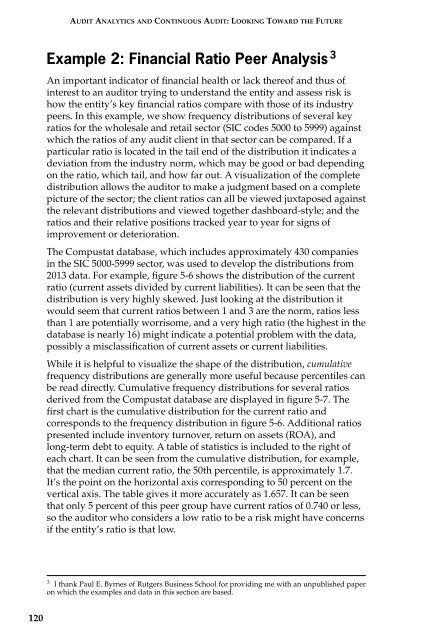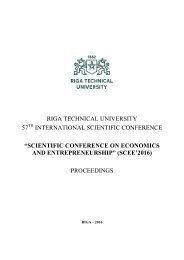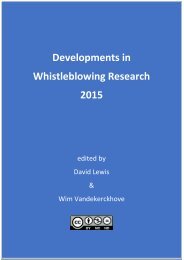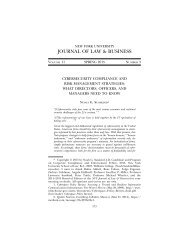AUDIT ANALYTICS AUDIT
x8YaD9
x8YaD9
- No tags were found...
Create successful ePaper yourself
Turn your PDF publications into a flip-book with our unique Google optimized e-Paper software.
<strong>AUDIT</strong> <strong>ANALYTICS</strong> AND CONTINUOUS <strong>AUDIT</strong>:LOOKING TOWARD THE FUTURE<br />
Example 2: Financial Ratio Peer Analysis 3<br />
An important indicator of financial health or lack thereof and thus of<br />
interest to an auditor trying to understand the entity and assess risk is<br />
how the entity’s key financial ratios compare with those of its industry<br />
peers. In this example, we show frequency distributions of several key<br />
ratios for the wholesale and retail sector (SIC codes 5000 to 5999) against<br />
which the ratios of any audit client in that sector can be compared. If a<br />
particular ratio is located in the tail end of the distribution it indicates a<br />
deviation from the industry norm, which may be good or bad depending<br />
on the ratio, which tail, and how far out. A visualization of the complete<br />
distribution allows the auditor to make a judgment based on a complete<br />
picture of the sector; the client ratios can all be viewed juxtaposed against<br />
the relevant distributions and viewed together dashboard-style; and the<br />
ratios and their relative positions tracked year to year for signs of<br />
improvement or deterioration.<br />
The Compustat database, which includes approximately 430 companies<br />
in the SIC 5000-5999 sector, was used to develop the distributions from<br />
2013 data. For example, figure 5-6 shows the distribution of the current<br />
ratio (current assets divided by current liabilities). It can be seen that the<br />
distribution is very highly skewed. Just looking at the distribution it<br />
would seem that current ratios between 1 and 3 are the norm, ratios less<br />
than 1 are potentially worrisome, and a very high ratio (the highest in the<br />
database is nearly 16) might indicate a potential problem with the data,<br />
possibly a misclassification of current assets or current liabilities.<br />
While it is helpful to visualize the shape of the distribution, cumulative<br />
frequency distributions are generally more useful because percentiles can<br />
be read directly. Cumulative frequency distributions for several ratios<br />
derived from the Compustat database are displayed in figure 5-7. The<br />
first chart is the cumulative distribution for the current ratio and<br />
corresponds to the frequency distribution in figure 5-6. Additional ratios<br />
presented include inventory turnover, return on assets (ROA), and<br />
long-term debt to equity. A table of statistics is included to the right of<br />
each chart. It can be seen from the cumulative distribution, for example,<br />
that the median current ratio, the 50th percentile, is approximately 1.7.<br />
It’s the point on the horizontal axis corresponding to 50 percent on the<br />
vertical axis. The table gives it more accurately as 1.657. It can be seen<br />
that only 5 percent of this peer group have current ratios of 0.740 or less,<br />
so the auditor who considers a low ratio to be a risk might have concerns<br />
if the entity’s ratio is that low.<br />
3 I thank Paul E. Byrnes of Rutgers Business School for providing me with an unpublished paper<br />
on which the examples and data in this section are based.<br />
120








